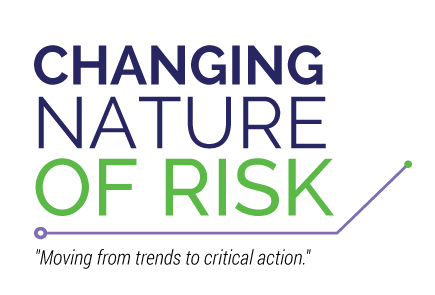Drones
Industry Maturity Index: Now
Why this is important:The ACT Changing Nature of Risk work group feels that use of drones will have a significant impact across the insurance landscape. We feel it is important for our industry to fully understand the impact and opportunity the use of drones presents. This advisory will provide you with an “executive summary” overview of the drone “issue”.
What is it?A drone is an unmanned aircraft. Drones are more formally known as unmanned aerial vehicles (UAV). Essentially, a drone is a flying robot. The aircraft can be controlled or can fly autonomously through software-controlled flight plans in their embedded systems working in conjunction with GPS. UAVs have most often been associated with the military but they are also used for search and rescue, surveillance, traffic monitoring, weather monitoring and firefighting, among other things. (TechTarget?)
The small unmanned-aircraft-system market is expected to reach $8bn in 2019, including services and applications: professional/hobbyists $1.1bn and the commercial share $5.2bn.
Broad Implications / Uses:Beyond the military applications, UAVs have many civil or commercial uses, including:
- Hobby and recreational use
- Aerial surveying
- Agriculture usage
- Search and rescue
- Delivery
- Traffic patrol and accident assistance
- Humanitarian aid
- Photography – image acquisition.
- Scientific research (data collection)
- News gathering
- Real Estate
- Law enforcement
- The list goes on…
Economic Impact(s):
- Worldwide sales of UAVs
- Speed of response in disaster situations
- New service businesses utilizing UAVs
- Loss of jobs due to replacement/substitution by UAV
- Drone companies/vendors – drones for hire
Insurance Industry Implications:Drones can have positive and negative impacts to many areas of our industry. As UAV’s continue to be purchased and operated exposures for manufacturers, operators and third parties/vendors will grow.
- Privacy/security – how is data collected, how used, who has access?
- Public safety
- Exposures (Commercial and personal)
- Product Liability
- Aircraft/General Liability – including personal injury
- Property coverages for the aircraft.
- Environmental/safety – flying into restricted airspace (Geofencing)
- Product availability: Insurance companies will need processes to develop and deliver appropriate policies to cover operator’s exposures.
- Use of UAVs by the insurance industry, e.g. in underwriting, loss control and disaster recovery.
- Property claims – review and damage assessment
Recommended Actions:
Agents –
- Ensure you and staff are aware of the basic UAV concepts (see ‘Resources’). Develop customer recommendations.
- Review coverage forms to determine coverage or lack thereof in both commercial and personal policies.
- Review your current customer base for possible impacts
- Investigate niche market for insuring UAV uses.
- Markets
- Underwriting guidelines
Carriers –
-
Product/coverage availability
-
Develop underwriting guidelines
-
Investigate offering coverages across spectrum of impact.
-
Review current policies for exclusions and unintended coverages
-
Investigate the legal requirements to integrate drones into claims and underwriting through the development of appropriate policies and procedures.
Vendors –
- Ensure management, quoting, and contact systems have the ability to handle these as specialty products.
Examples/Resources:
Evolving Technology Caution:
As with any connected technology, aspects such as safety concerns, along with hacking and use with malicious intent is possible.In the case of drones, there can be unwarranted surveillance, overriding guidance systems to take control, and other variables such as third-party liability.
Other:
- In August 2016, the FAA implemented the first operational rules for routine non-hobbyist use of small-unmanned aircraft systems. The provisions of the new rule, formally known as Part 107 of the Federal Aviation Regulations (FAR), are designed to minimize risks to other aircraft and people and property on the ground. Part 107 does not apply to model aircraft. Model aircraft operators must continue to satisfy all the criteria specified in FAR Part 101.
- As of Dec. 21, 2015, the Federal Aviation Administration(FAA) requires all owners of small unmanned aircraft, or drones, weighing between 0.55 pounds and 55 pounds to register onlinebefore taking to the skies.
Call to Action:
-
- Become educated about this topic.
- Educate your staff and colleagues about this topic.
- Make sure your customers understand the insurance implications about their use of drones.
|
As the number of UAVs and their useful applications increase, the exposures and insurance needs of consumers and businesses will increase. In addition to becoming better educated on the impact drones will have on our industry we must be proactive in developing products that will address consumer (personal and commercial) needs. Further we must create consumer advisories on insurance issues related to drone use.
Authors: Rick Morgan and Marty Agather
To download a PDF of this Risk Advisory: ACT Risk Advisory – Drones – 2017Aug10 UPDATED.pdf
|
|
